Archipelago Province of Russia
Everything is as it should be, but this province was in ... the Mediterranean Sea.
Nevertheless, all this is genuine, but long forgotten. story...
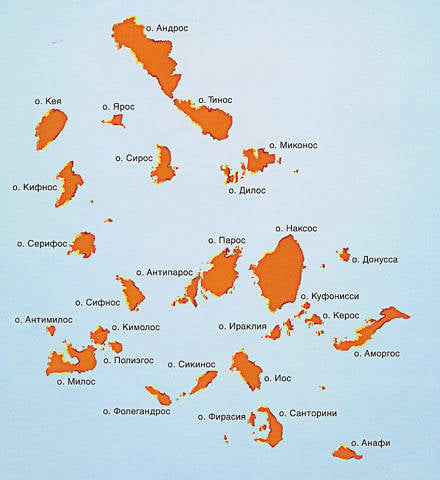
26 — 27 On June 1770, the Russian squadron under the command of Count Alexei Orlov burned down the Turkish fleet in Chesmenskaya Bay. Killed 14 ships, 6 frigates and up to 50 small ships. The 60-gun ship "Rhodes" and 5 of large galleys became the trophies of the Russians. The Russian fleet became the master of the Aegean Sea. In St. Petersburg, Catherine II ordered, in honor of the victory, to mint a medal, which depicted a burning Turkish fleet with a laconic inscription: "He was." And in Tsarskoye Selo, on the pond, the Chesme Column was erected, to which tourists still lead today.
Д
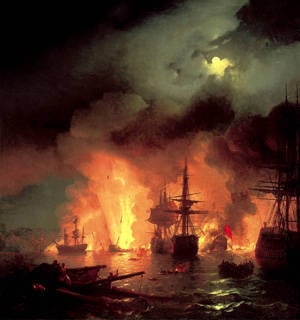 more historians describe the brilliant victories of Rumyantsev and Suvorov, the uprising of Pugachev, and so on. Meanwhile, the Russian fleet left the Mediterranean only at the beginning of 1775. And what did he do there for five (!) years?
more historians describe the brilliant victories of Rumyantsev and Suvorov, the uprising of Pugachev, and so on. Meanwhile, the Russian fleet left the Mediterranean only at the beginning of 1775. And what did he do there for five (!) years?After Chesma, Catherine II sent three more squadrons to the Mediterranean, there were only ships in the Archipelago (the term “battleship” was not used) - as many as nineteen!
Generally speaking, the sending of Russian squadrons to the Mediterranean Sea itself was a brilliant strategic plan of the great empress and her advisers, who would later be called "Ekaterina's eagles." Indeed, before that, not a single Russian warship even sailed into the Atlantic, except for the transfer of “newly built” ships from Arkhangelsk to Kronstadt.
All Russian victories fleet grow dim before Chesma, and not only by the number of enemy ships sunk, but also because the battle was won many thousands of miles from their bases. In previous and subsequent battles in the Baltic and the Black Sea, Russian squadrons went to sea for a week, with a force of three, gave battle 100 miles from the base, or even in view of their own shore, and went home. The wounded and sick were unloaded at the base, the ship got up for repairs. And only after a few weeks or even months the squadron was replenished with new sailors to replace the retired and, taking on board ammunition and provisions, again went to sea.
And then Count Orlov was alone in a strange sea. Transport ships that came from Kronstadt in 5 years can be counted on fingers. The entire Mediterranean coastline from Dalmatia to Dardanelles and from Dardanelles to Tunisia was Turkish. France and Spain were hostile to the Russians and did not allow them in their ports. True, the Knights of Malta and the Italian states were ready to provide hospitality, but only for very good money. Orlov’s squadron was to die in less than a month, like Napoleon’s Great Army in Russia.
According to the original plan of Catherine, it was supposed to land small landings on the territory of mainland Greece, and then the “sons of Hellas” should have raised a rebellion, expel the Turks and present their ports to the Russians. But the Turks concentrated in Greece, a large force, and the leaders of the rebels did not get along with each other and never managed to create a regular army. As a result, the Russian paratroopers had to get aboard the ships.
After Chesma, Catherine II in every way encouraged the count to break through the Dardanelles and bomb Istanbul from the sea. The fortifications of the Turks in the strait were then very weak, and technically the task was easily accomplished. However, Alexei Orlov was scared. The 24-year-old sergeant of the Preobrazhensky regiment was not afraid to plot against the legal emperor in favor of the German, who had no rights to the throne, and later in Ropsha personally arrange “hemorrhoidal colic” to Peter III. But after Chesma the count was at the height of his fame. Previously, a beggar guardsman risked his head only, and with luck, he acquired everything. Now he could lose everything, and in case of luck, not get anything.
With a probability of 95%, the Russian squadron would break through the Dardanelles. What's next? Well, if Mustafa III, seeing the Russian fleet under the windows of the palace, asks for peace. And if not? Drop landing? No troops. You can burn Istanbul, but why? The Sultan will be angry and will continue the war, and Catherine will lose in Europe the image of a wise and enlightened empress, whom she had so hard created for many years. And to leave the Dardanelles Russian squadron will be much more difficult.
And then, with the approval of the Empress, Orlov decides to establish a Russian province on the Cyclades and adjacent islands of the Aegean Sea.
It is not known who suggested choosing Paros Island as the main base of the Russian fleet. Anyway, strategically, he was chosen successfully. Paros belongs to the Cyclades Islands (southern Aegean Sea) and is located in the center of them. Thus, owning Paros, you can easily control the Aegean Sea and the approaches to the Dardanelles Strait, which is about 350 km. The nearest point of the peninsula of Asia Minor from Paros is 170 km, and it is impossible for the Turks to land troops from the mainland on the island without securing domination of the sea.
15 October 1770 The squadron of Count Alexei Orlov consisting of the ships Three Hierarchs, Rostislav, Rhodes, the bombardier ship Grom, the frigates Slava, Pobeda and Saint Paul arrived to the island of Paros.
By the time the Russians captured Paros, 5 had thousands of people, the vast majority of Orthodox Greeks. They were engaged in arable farming, viticulture and sheep farming. The population of the island dragged a beggarly existence.
There were no Turkish authorities on the island, and the Greeks joyfully welcomed our ships. Russian sailors used both bays of the island - Ausu and Trio, where the ships' stops were equipped. But the capital of the "province" became the city of Aouz, built by the Russians on the left bank of the bay of the same name.
First of all, the bay was fortified; on its left bank two forts were built with stone parapets for nine and eight 30-and 24-pounders. A 10-gun battery was placed on an island at the entrance to the bay. Accordingly, the Trio bay was strengthened.
The Admiralty building was erected on the left bank of Auz Bay. Yes Yes! Russian Admiralty! The Baltic Fleet had an Admiralty in St. Petersburg, the Admiralty did not even exist on the Black Sea, as there was no fleet, but the Admiralty appeared on the Mediterranean Sea for our Archipelagic Fleet. Dozens of shipwrights, including the famous A.S. Kasatonov, who later became the chief inspector of shipbuilding, were discharged to Ausa from Petersburg. 3 July 1772 Admiral Spiridov gave the Xatum Prize to the Kasaton Prize with the announcement in the order.
Large ships in Ausa were not built, and there was no need for this, but they repaired ships of all ranks. But in a large number built small sailing and various rowing vessels.
Ausu was filled with various administrative buildings, bakeries, spinners, barracks of sailors. I note that ground forces for some objective, but rather subjective reasons, were stationed outside the city. Thus, the barracks of the Shlisselburg Infantry Regiment were located on the right bank of the Auz Bay. A little further were the camps of the Greeks, Slavs and Albanians. The camp of the Preobrazhensky regiment of the Life Guards was located deep in the island. Even a gymnasium was established in Auza, in which hundreds of Greek boys studied.
The county of the 27 islands was supposed to provide a fleet of up to 50 pennants and several infantry regiments. Therefore, the islands were levied with a tax (10 interest tax) on bread, wine, timber, etc. A certain share of the tax was levied in cash. In addition, part of these goods was bought by the Russian authorities, but the author failed to establish the proportion between the paid goods and the taxes collected. But, alas, these taxes were not enough, and Orlov did not want to become a burden to the friendly Orthodox people. Basurmans must pay for everything!
Since the 15th century, the Greeks, in particular the islanders, have already held in their hands most of the maritime transport in the Mediterranean. They considered piracy to be a completely legitimate business, as if part of trade. The only thing that restrained them was the prevailing power of the Turkish fleet. Chesma and a number of other victories of the Russian fleet freed them from the Turks. Even before Chesma, several Greek owners of merchant ships (they were captains) arrived at Orlov and were asked to enter Russian citizenship. The count willingly accepted the Greeks and allowed them to raise the flags of St. Andrew on their ships.
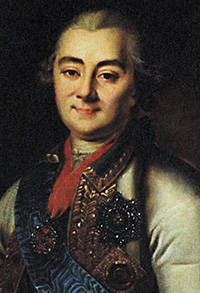 Frigates, brigs, shebeks and galleys flying Russian flags flew all over the Eastern Mediterranean. Recall that the vast Turkish empire had almost no roads, and trade was mainly by sea. Every year, hundreds of Turkish and, to be honest, neutral ships became the prey of the Greek corsairs. And sometimes a mixed (Russian-Greek) crew commanded by Russian officers went hunting. Corsairs made several daring raids on Turkish ports in Asia Minor, Syria and Egypt.
Frigates, brigs, shebeks and galleys flying Russian flags flew all over the Eastern Mediterranean. Recall that the vast Turkish empire had almost no roads, and trade was mainly by sea. Every year, hundreds of Turkish and, to be honest, neutral ships became the prey of the Greek corsairs. And sometimes a mixed (Russian-Greek) crew commanded by Russian officers went hunting. Corsairs made several daring raids on Turkish ports in Asia Minor, Syria and Egypt.It must be said that the Greek captains did not "krysyatnichali" and gave the provinces to the authorities both in money and in kind. The same Alexey Orlov received a lot of jewels, thoroughbred horses and noble beauties.
The adventures of the captains of Orlov’s squadron were much greater than those of the praised filibusters of the Caribbean. So, on the night of September 8, the 1771 of the “St. Mikhail ”(sailing merchant ship), carrying a landing of four officers and 202 soldiers of the Shlisselburg regiment, missed the Russian squadron. And the next morning there was a calm - the sails of an awkward trektra hung. And out of nowhere - five Turkish galleys. The Turks were counting on easy prey, but Captain Alexander Mitrofanovich Ushakov decided to fight to the death. According to his order, “instead of rounds, empty water barrels were hung around the side, hung with beds and a dress, and two boats were sent with a tug to make it easier to turn the trektra during defense. Two Turkish galleys attacked our ship from the stern, and the third - from the starboard, but, met with strong carcass fire, stopped. Recovering, the Turks amicably rushed to the trektra with the intention of boarding it. Having let them in on a pistol shot, Ushakov suddenly turned the skating track over to them and opened a continuous rapid fire, which forced the enemy to retreat in great frustration. ”
On “St. Michael ”the sails and rigging were badly damaged, there were five holes in the starboard side, but thanks to the improvised“ armor ”of Ushakov only one musketeer was killed and seven were wounded.
On the night of September 9, 1772, Lieutenant Commander Panaioti Alexiano approached Stanchio Island and landed troops. A small Turkish fortress of Keffano, where 11 cannons were captured, was taken on the move. For this, Catherine II awarded Alexiano with the Order of St. George 4 degree.
And in just a month and a half, Panaioti Alexiano, in his “St. Pavle "and with the corsair feluca rowing, commanded by the Greek Palamida, goes to the mouth of the Nile.
Frigate "St. Pavel is a former merchant ship. Gun ports were disguised. And the feluka was also no different from the hundreds of the same felucus swimming in the Eastern Mediterranean. Thus, the Alexiano ships, which did not cause any suspicion among the Egyptians, calmly entered the Damietta harbor (now Dumyat, in 45 km north-west of modern Port Said). And in the port the corsairs opened fire. In the two-hour fierce battle, all Turkish military and trade ships "were betrayed by the flame."
Already leaving the port, Aleksiano stumbled upon a Turkish frigate. After a short firefight, the Turk lowered the flag. The frigate was taken by the local ruler Selim Bey "with the three main agami, various other officers and servants, of whom all of them are 120 Turks."
13 June 1774 Aleciano on the frigate “St. Pavel "together with the two semi-trailers" Zizhiga "and" Lion "took to the sea and headed for the Dardanelles. 26 Jun Alexian landed 160 paratroopers on a small island Karybada (Mekasti), located in the Gulf of Decaria near the Rumelian coast. Towards them advanced detachment of the Turks with a gun. But the paratroopers scattered them and captured the gun.
Then the paratroopers besieged the weakly fortified stone fortress with five towers. After a short exchange of fire, her garrison capitulated with the condition that the besieged be allowed without weapons by boat to cross over to the Rumelian coast. The paratroopers fulfilled their promises, and the head of the fortress Sardar Mustafa aka Kaksarli with fifty Turks went to the European coast. Our sailors overloaded to “St. Pavel ”taken in the fortress 15 caliber guns from 3 to 14 pounds, 4200 cores, 40 gunpowder barrels and other supplies. On the shore, the paratroopers burned the Feluki 4, and in the fortress - all the houses of the townsfolk, and on that left back home.
Everything described above was not included in the history books as ordinary everyday life of a forgotten war.
Turkish maritime trade was paralyzed, famine began in Istanbul. The Turks were rescued by the French, who, under their flag, transported food and other goods to the Turkish capital. Count Orlov and the Russian admirals demanded from the empress permission to seize the French indiscriminately, but this was not done because of Catherine’s indecision.
25 July 1774. A Turkish semi-galera with a white flag approached the Russian squadron of Admiral Yelmanov, who was stationed near the island of Tasso. On it arrived Major Belich (a Serb in the Russian service) with a letter from Field Marshal Rumyantsev, in which it was said that on July 10 peace was concluded with the Turks. The campaign in the Archipelago is over.
Catherine failed to keep the promises made to the Greeks. Our admirals told them that after the war, if not all of Greece, then at least the “province” would become part of Russia. And now the Turks were to return to the islands. As far as possible, Catherine tried to alleviate the fate of the Greeks who trusted her. The terms of peace included an article on amnesty for all Greeks, Slavs and Albanians who fought on the side of Russia. To monitor the implementation of this article by the Turks was entrusted to the Russian consulates in Greece. Everyone from the population of the island province was allowed to sail to Russia on Russian and Greek ships.
Thousands of Greeks went to Russia, most of them settled in the Crimea and on the coast of the Azov Sea. The gymnasium was transferred to Petersburg, where a Greek gymnasium was opened, later renamed the Greek Corps.
Several Korsar frigates with Greek refugees - the Archipelago, Tino, Saint Nicholas and others, disguised as merchant ships, passed the Straits, and then became one of the first ships of the Black Sea Fleet.
Catherine ordered the formation of a Greek Infantry Regiment in Crimea. Many Greek corsairs became admirals of the Russian fleet. Among them are Mark Voinovich (he had Serbian roots), Panayoti Aleksiano, Anton Alekiano and others.
Kyuchuk-Kaynardzhiysky world was only a short truce. In August 1787, the Ottoman Empire again declared war on Russia. Greeks from the first generation of corsairs became the captains of a number of ships of the Black Sea Fleet, and the old pirate Mark Voinovich commanded the Sevastopol squadron of the Black Sea Fleet. And the young Greek corsairs, without waiting for the arrival of the Russian squadrons, themselves equipped the ships and under the Andrew flags went out to the Mediterranean Sea.
- Alexander Shirokorad
- http://www.bratishka.ru"rel =" nofollow ">http://www.bratishka.ru
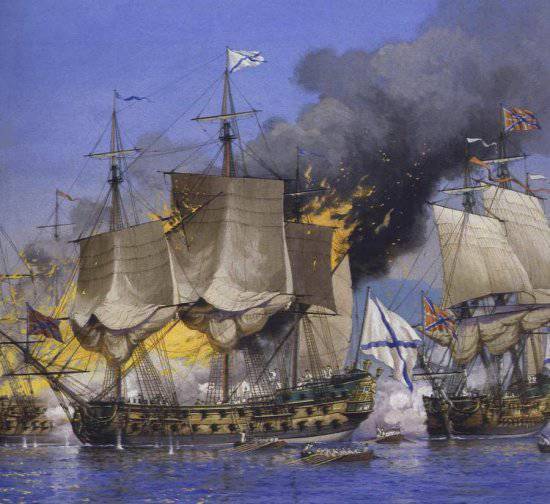
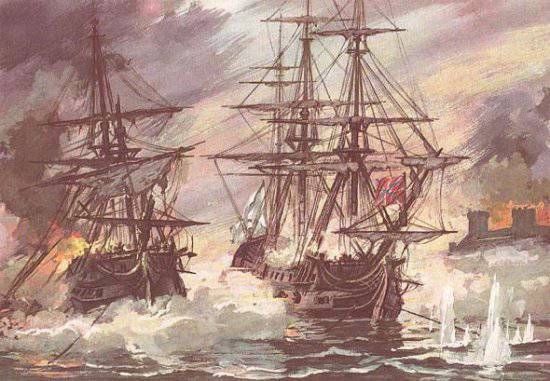
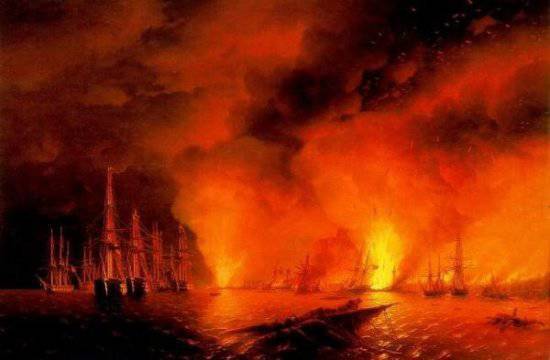
Information